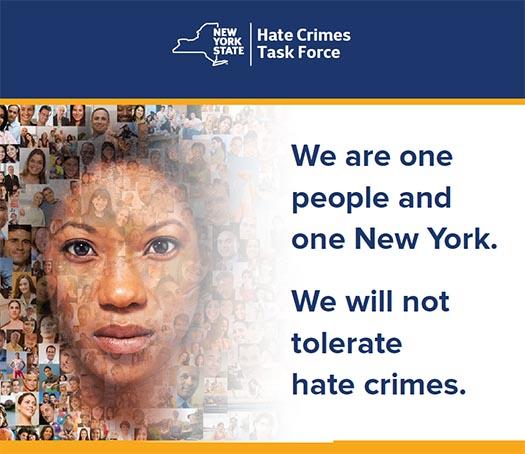New York State Faces Escalating Hate Crime Rates: An In-Depth Analysis
Overview of the Growing Hate Crime Crisis in New York
Recent findings from the New York State Comptroller’s Office reveal a concerning upward trajectory in hate crime incidents throughout the state. This increase, cutting across diverse communities and motivated by various forms of bias—including race, religion, ethnicity, and sexual orientation—poses notable challenges to public safety and social harmony.Urban hubs such as New York City and Buffalo have experienced the most pronounced spikes, with hate crimes rising at a rate surpassing many other criminal activities.
Several key drivers underpin this disturbing trend:
- Escalating political and societal polarization following recent national and global events
- Proliferation of extremist rhetoric amplified by social media and online forums
- Increased targeting of marginalized groups, heightening their sense of insecurity and vulnerability
| Year | Reported Hate Crimes | Year-over-Year Growth |
|---|---|---|
| 2020 | 1,245 | +12% |
| 2021 | 1,490 | +20% |
| 2022 | 1,780 | +19% |
| 2023 (Preliminary) | 1,950 | +9.5% |
Who Is Affected? Demographic and Regional Insights
Analysis of the latest statistics highlights significant disparities in hate crime victimization across demographic lines. Minority populations, especially Black and Hispanic communities, continue to bear the brunt of these offenses disproportionately. Additionally, young adults aged 18 to 34 emerge as both frequent victims and perpetrators, signaling a critical need for youth-focused intervention and education.
Geographically, the distribution of hate crimes is heavily skewed toward metropolitan areas. New York City alone accounts for over two-thirds of reported cases, followed by the Buffalo metropolitan region. While rural and suburban counties report fewer incidents, experts caution that underreporting may mask the true extent of the problem in these locales.
| Area | Reported Incidents (2023) | Share of Statewide Total |
|---|---|---|
| New York City | 1,325 | 68% |
| Buffalo Metropolitan Area | 220 | 11% |
| Rochester | 140 | 7% |
| Suburban Counties | 115 | 6% |
| Rural Counties | 90 | 4% |
Community Impact and Law Enforcement Initiatives
The rise in hate crimes has deeply affected community dynamics,eroding trust and fostering fear among targeted groups. Victims often endure not only physical harm but also lasting emotional trauma, which can lead to social withdrawal and diminished participation in community life. Institutions such as religious centers, cultural organizations, and local businesses report declines in engagement, reflecting a broader societal impact.
In response, public safety agencies have adopted comprehensive strategies aimed at mitigating these offenses and supporting affected populations. These efforts include:
- Specialized training programs for officers to better identify and handle bias-driven crimes with sensitivity.
- Community engagement initiatives that encourage open dialog and empower residents to report incidents confidently.
- Openness in data reporting to facilitate informed policymaking and resource distribution.
- Partnerships with nonprofits to provide victim assistance and promote educational outreach.
| Initiative | Expected Benefit |
|---|---|
| Law Enforcement Training | Enhanced recognition and empathetic response to hate crimes |
| Community Outreach | Strengthened trust and increased incident reporting |
| Data Transparency | Evidence-based policy progress |
| Nonprofit Collaboration | Improved victim support and prevention education |
Comprehensive Strategies for Prevention and Enforcement
Addressing the surge in hate crimes requires a holistic approach that integrates prevention, enforcement, and community empowerment. Statewide programs should emphasize cultural competency and resilience-building, especially within vulnerable populations. Allocating dedicated funding for educational campaigns and intercultural dialogue is critical to reducing prejudice before it manifests as violence. Concurrently, law enforcement agencies must refine their protocols to ensure accurate identification, reporting, and swift response to hate-motivated offenses.
Key components of an effective statewide framework include:
- Uniform Hate Crime Reporting: Establish consistent data collection standards across all jurisdictions to enable reliable trend monitoring.
- Cross-Agency Cooperation: Promote collaboration among local police, community groups, and state entities to share intelligence and coordinate responses.
- Legislative Enhancements: Push for stronger laws with clearer definitions and harsher penalties to close loopholes and deter offenders.
- Expanded Victim Services: Increase availability of counseling, legal assistance, and recovery resources tailored to hate crime survivors.
| Strategy | Priority Level | Anticipated Impact |
|---|---|---|
| Community Education Initiatives | High | Reduction in bias-related incidents |
| Improved Reporting Mechanisms | Medium | More accurate and comprehensive data |
| Legal Reform | High | Stronger deterrence and accountability |
| Victim Support Expansion | Medium | Enhanced recovery and resilience |
Final Thoughts
The upward trend in hate crimes across New York State, as illuminated by the latest report from the Office of the State Comptroller, presents a formidable challenge that demands immediate and sustained action. Strengthening prevention efforts, improving law enforcement responses, and bolstering victim support systems are essential steps toward safeguarding communities. Through coordinated, data-driven strategies and inclusive community engagement, New York can work toward restoring safety, trust, and unity across its diverse population.



